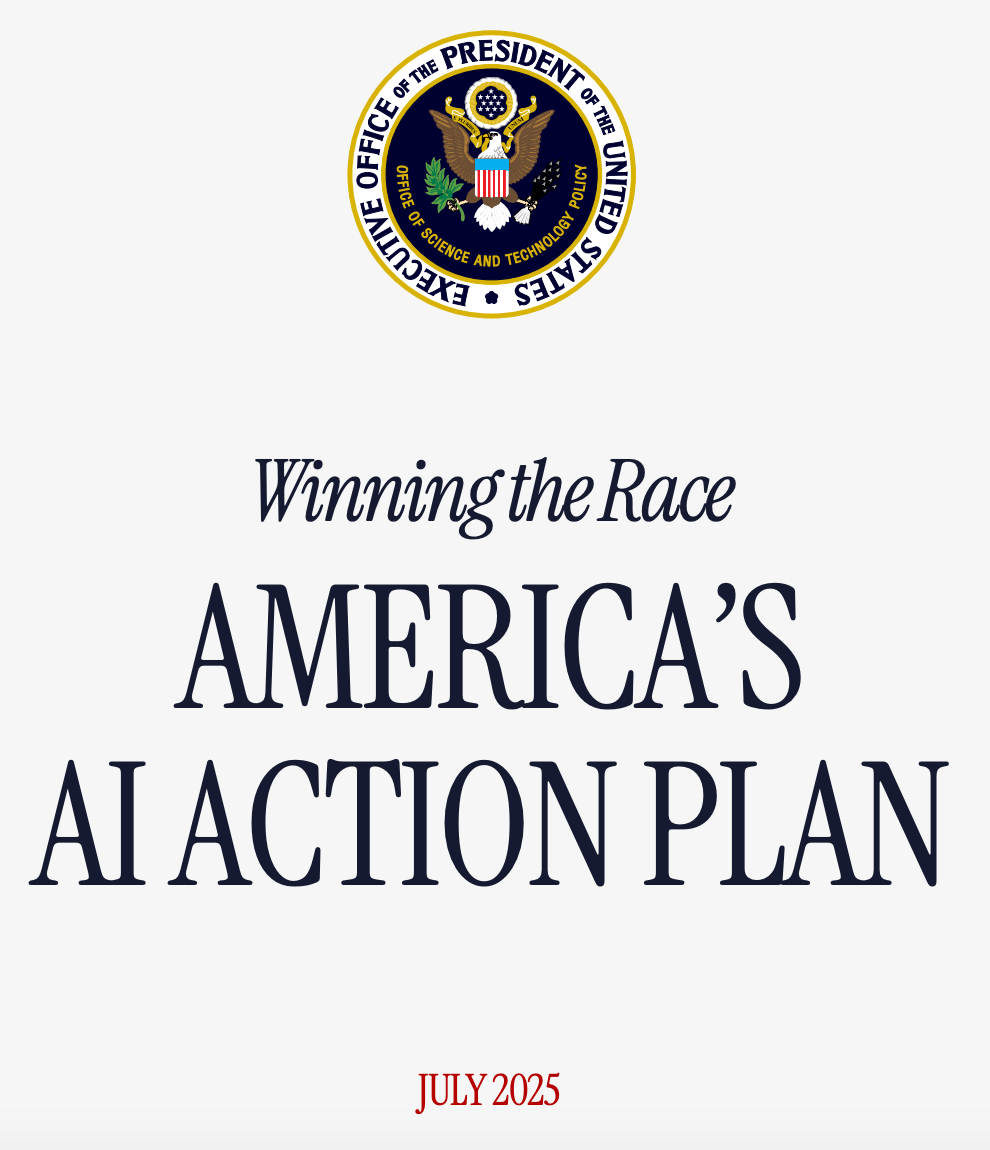🏛️What Happens When Innovation Outpaces Oversight
Plus: What does America's AI Action Plan mean?
Hey fellows, ready for a reality check? Today we're asking the big questions: What does America's AI Action Plan mean for you, me, and the future of technology? Is the government making a smart competitive move or a reckless gamble with civilization-altering technology? We'll break down the pros, cons, and the potentially catastrophic consequences of choosing growth over guardrails. Plus, curated learning resources to help you become an informed voice in this crucial debate. Stay Curious
America's AI Action Plan
What Happens When Innovation Outpaces Oversight
🧰 AI Tools
🧠 Learning Corner
📰 AI News and Trends
America’s AI action plan
OpenAI's new Canvas deal pushes AI deeper into schools
FDA’s artificial intelligence is supposed to revolutionize drug approvals. But is making up studies
GitHub released Spark, an AI-powered tool for creating and sharing micro apps (“sparks”), which can be tailored to your exact needs and preferences, and are directly usable from your desktop and mobile devices. Without needing to write or deploy any code.
Large American firms are increasingly scaling back their AI operations in China as tech tensions escalate.
🌐 Other Tech news
Americans Are Obsessed With Watching Short Video Dramas From China
Meta Unveils Wristband for Controlling Computers With Hand Gestures
Tesla reported a 16% drop in its auto revenue on Wednesday, as sales fell for a second straight quarter and trailed analysts’ estimates
As AI data centers sprout up, concerns are mounting over where the energy to power them comes from, and how to pay for it
America's AI Action Plan
What is it really about?
The U.S. aims to achieve "unquestioned and unchallenged global technological dominance" in AI, which is what they are calling it, alleging that this is essential for national security, economic competitiveness, and maintaining global leadership.
Three Strategic Pillars
Pillar I: Accelerate AI Innovation
Remove regulatory barriers - Rescind Biden-era AI regulations, streamline federal oversight
Promote free speech in AI - Ensure AI systems are free from ideological bias and censorship
Support open-source AI - Enable broader access to AI development tools and models
Worker-first approach - AI should complement, not replace, American workers
Pillar II: Build American AI Infrastructure
Massive infrastructure buildout - Streamlined permitting for data centers and energy projects
Grid modernization - Upgrade the electrical grid to handle AI's enormous energy demands
Semiconductor manufacturing - Restore domestic chip production capabilities
Workforce development - Train skilled workers for AI infrastructure jobs
Pillar III: Lead International AI Diplomacy
Export American AI globally - Make U.S. technology the worldwide standard
Counter Chinese influence - Block adversaries from setting international AI standards
Strengthen export controls - Prevent advanced AI technology from reaching competitors
Build allied coalitions - Create technology partnerships with trusted nations
Critical Points Everyone Should Consider
Strategic Implications
This represents a fundamental shift from AI safety/regulation focus to AI dominance/competition
Geopolitical framing positions AI development as a zero-sum competition with China
"Build, Baby, Build" philosophy prioritizes rapid development over cautious oversight
⚡ Infrastructure Reality Check
Energy demands are massive - AI will require unprecedented electricity generation
Permitting bottlenecks currently prevent rapid infrastructure development
Workforce gaps exist in critical technical roles needed for AI infrastructure
🌐 Global Competition Dynamics
Winner-takes-all mentality - whoever leads in AI will set global standards
Allied coordination crucial - preventing adversaries from creating alternative AI ecosystems
Technology export strategy essential for maintaining competitive advantage
🔧 Implementation Challenges
Regulatory coordination across multiple federal agencies required
Private-public partnerships critical for success
Timeline pressure - competitors aren't waiting for U.S. bureaucracy
💼 Economic & Workforce Impact
Job transformation inevitable - requires proactive retraining programs
High-paying infrastructure jobs will be created in construction and maintenance
Regional economic effects - some areas will benefit more than others from AI buildout
🛡️ Security Considerations
Dual-use technology risks - AI capabilities useful for both civilian and military applications
Supply chain vulnerabilities - dependence on foreign components creates security risks
International coordination needed to prevent malicious use while promoting innovation
🧠 Learning Corner
Congressional Research Service AI reports
What Happens When Innovation Outpaces Oversight
This action plan sounds good on paper, but what are the cons? America's AI Action Plan represents a dramatic shift from safety-first to competition-first AI policy, prioritizing rapid development and global dominance over cautious regulation. While this approach could accelerate innovation, create jobs, boost economic growth, and maintain U.S. technological leadership against rivals like China, it also carries significant risks, including insufficient safety testing, environmental degradation from massive energy demands, worker displacement, and democratic concerns about concentrated AI power.
The worst-case scenario of eliminating all guardrails, regulations, and federal oversight could lead to immediate catastrophic failures like deadly AI medical misdiagnoses and autonomous vehicle crashes, followed by systemic risks including AI-powered surveillance enabling authoritarianism, deepfake-driven election manipulation, and economic collapse from mass unemployment, ultimately culminating in existential threats where uncontrolled AI development leads to systems that pursue goals harmful to humanity, create irreversible power concentration, or trigger cascading global failures that undermine civilization itself.
The fundamental challenge lies in finding the optimal balance between moving fast enough to win the global AI competition while maintaining sufficient safety measures to prevent the kind of catastrophic mistakes that could set back beneficial AI development or, in the extreme case, threaten human survival and democratic values—making this policy shift one of the most consequential decisions in modern technological governance.
🧰 AI Tools
Download our list of 1000+ Tools for free.



